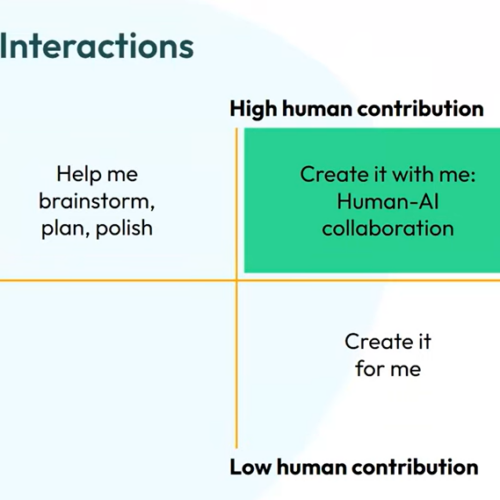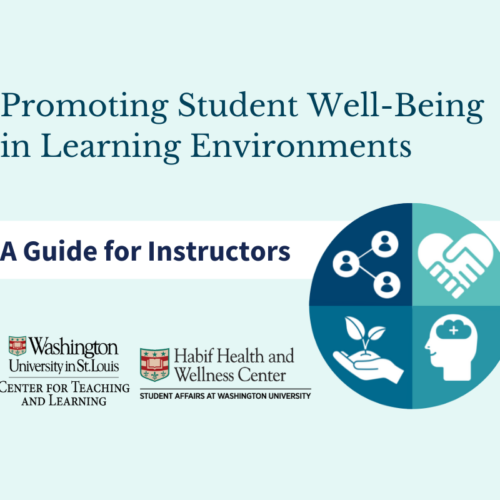Using Student Teamwork Effectively: Teaching Tips
 By Emily Boyd, Ph.D., Teaching Professor in the Department of Mechanical Engineering & Materials Science, McKelvey School of Engineering, Washington University in St. Louis
By Emily Boyd, Ph.D., Teaching Professor in the Department of Mechanical Engineering & Materials Science, McKelvey School of Engineering, Washington University in St. Louis
Have you ever asked students to work on a project or assignment in teams and seen their eyes roll all the way from the back of the classroom? I have. Many students are jaded when it comes to completing coursework in groups because they’ve been burned before; they’ve had teammates who come unprepared, contribute little, do shoddy work, and skip meetings. Despite the potential drawbacks to working in teams, there are clear benefits. Students learn well from each other, and explaining a concept enhances understanding. Most of the careers our students will pursue require working with other people. To be successful, they will have to do it well, so the sooner they learn this skill the better.
To address potential pitfalls and unfairness of teamwork, there are many things we can do as instructors.
1) Assign the teams.
I know it would be easier, but do not let your students select their teammates. When students select their own teams, they choose their friends, who are often a lot like themselves and with whom they work outside of class anyway. This can create a disparity in team performance, and students don’t learn as much. It’s best to assign teams that are diverse in every dimension: gender, race, ethnicity, citizenship, academic performance, fraternity/sorority membership, participation in collegiate athletics, love or hate for cilantro…you name it (well, maybe not the cilantro factor).
2) Include a peer assessment that affects students’ grades.
It’s no wonder that some students slack when they are in a group, especially if it contains strong performers who can’t tolerate imperfection. Why shouldn’t they go along for the ride, when there is no academic consequence? In my courses, I have students complete a peer evaluation of their fellow team members at the end of a project. If students underperform in their teams, their grade on the project is lowered. Conversely, if students contribute more than their fair share, their grade on the project is increased. If your students are working in teams long-term, I suggest doing a practice peer assessment at the beginning of the project to notify the underperformers and give them the opportunity to correct before a final assessment affects their grade. Utilizing a fair, data-driven peer assessment is key to doing this well (see below).
3) Set ground rules.
Now that you have assigned diverse teams, this is a great opportunity to teach about diversity and respecting others who are unlike themselves. I have my students create a team compact at the beginning of the project, where they define their expectations for each person’s contributions and what qualifies as good teamwork. This gets everyone on the same page. The compacts usually include listening to others and respecting other people’s backgrounds and learning styles. If there is an issue with the group dynamic later in the semester, the compact gives me something to point to.
Assigning diverse teams and carrying out a data-driven peer assessment aren’t trivial tasks. A tool that I like to use is CATME (see http://www.catme.org), which is an online website and tool developed by researchers at Purdue University with funding from the National Science Foundation. It costs a small amount per student, but it’s well worth it in my opinion. My department now uses CATME to conduct peer assessments for all three of our undergraduate lab courses, which require students to write group lab reports, as well as three of our classroom-based courses that require a large amount of teamwork.
While working effectively with others comes easily to some of us, I assure you that is not the case for all our students. Learning how to speak up, assert themselves, uphold commitments, show compassion, synthesize ideas, and communicate a concept are all valuable, life-long skills we can teach students through teamwork. Let’s implement this teaching strategy in a way that makes it meaningful and fair to students.





